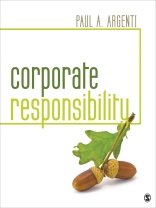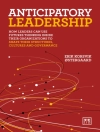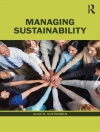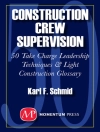‘This is the cutting-edge textbook on a managerial approach to corporate responsibility. Students and executives will benefit a great deal by studying the cases and best practices that are here. It’s a terrific book.’
—Ed Freeman, Elis and Signe Olsson Professor of Business Administration,
Darden School of Business, University of Virginia
Corporate Responsibility offers a concise and comprehensive introduction to the functional area of corporate responsibility. Readers will learn how corporate responsibility is good for business and how leaders balance their organization’s needs with responsibilities to key constituencies in society. Author Paul A. Argenti engages students with new and compelling cases by focusing on the social, reputational, or environmental consequences of corporate activities. Students will learn how to make difficult choices, promote responsible behavior within their organizations, and understand the role personal values play in developing effective leadership skills.
Cuprins
Preface
Why Corporate Responsibility?
What Is This Book About?
Why Is Corporate Responsibility So Important Today?
Acknowledgments
About the Author
Part I: What and Why
1. An Introduction to Corporate Responsibility
What Is Corporate Responsibility?
The 21st Century′s CR Surge
The Upside of CR
Responsibility Inside and Out: Employee Involvement In CR
Building a Values-Based Culture
The Evolution of CR
How to Think About CR: Frameworks and Implementation
Conclusion
Notes
Starbucks Coffee Company
2. The Business Case for CR
What Is the ‘Business Case’ for Corporate Responsibility?
Perceived Barriers to Corporate Responsibility
Models Created to Categorize the Benefits of CR Initiatives
Creating Value Through Corporate Responsibility
The Business Case for Sustainability
Structure of CR Function
Conclusion
Notes
Unilever’s Sustainable Living Plan: Revolutionizing Sustainability on a Global Scale
Part II: Three Components of CR: Environmental, Social, and Governance
3. Environmental Responsibility
The Evolution of Corporate Environmental Responsibility
Greenwashing and Sustainability Rankings
Measuring Environmental Friendliness
The Current State/Heading Toward a Triple Win
Growing Investor Interest
Human Capital and Sustainability
Conclusion
Notes
Wal-Mart’s Sustainability Strategy
4. The Corporation’s Responsibility to Society: Human Rights and Labor Issues
Introduction to Socially Responsible Business Practices
Socially Responsible Labor Practices
Workplace Discrimination
Labor Issues in the Supply Chain
The Scope of Human Rights Responsibility
Conclusion
Notes
Royal Dutch/Shell Group: Brent Spar and Nigeria
5. The Corporation’s Responsibility to Consumers
The Food Industry
The Healthcare and Pharmaceutical Industries
Conclusion
Notes
Creating Shared Value at Mc Donald’s
6. Responsible Corporate Governance
The Board of Directors
Corporate Governance in Crisis
The 2007 Financial Crisis
Government Response to Corporate Scandals
The Evolution of Corporate Governance to Include Corporate Social Responsibility
Conclusion
Notes
The New York Stock Exchange and Richard Grasso: Excessive Compensation as a Failure of Corporate Governance
Part III: Corporate Responsibility in Action
7. Corporate Ethics
Definition of Corporate Ethics
The Evolution of Corporate Ethics
Corporate Ethics in the Modern Era
Relationship Between Ethics and Other Areas of CR
How Ethics Informs Business Decision-Making
Role of Ethics in MBA Curricula
Ethics as a Creator of Shared Value
Conclusion
Notes
Il Mare’s Oculare
8. Corporate Philanthropy
Motivations Behind and Critiques Against CP
The Strategic Approach to CP
The Business Case and Value Creation
Measuring Progress and Improving Outcomes
Conclusion
Notes
Corporate Philanthropy at Goldman Sachs: 10, 000 Small Businesses
9. Communicating Corporate Responsibility
The Strategic Importance of Communicating CR
The Current Environment for Promoting Responsible Business Practices
How to Effectively Communicate Your Company′s CR Strategy
The Connection Between Communicating CR and Corporate Reputation
CR Reporting
Communicating CR in a Digital World
Conclusion
Notes
FIJI Water: Going Green or Greenwashing?
10. Implementing a CR Strategy
Current Approaches to CR Implementation
Our Approach
How CR Strategy Relates to Implementation
Where Do CSR Strategies Usually Come From?
How Do You Select and Refine Your CSR Focus?
How Should a Corporation Evaluate CR Strategies/Opportunities?
Driving Internal Change
Establishing a Change Movement Organization
Gaining Support of the Top Management Team
Establishing Organizational Momentum
Reinforcing Through Incentives
Partnering with External Parties
Measuring and Reacting
Social Sustainability
Conclusion
Notes
The Timberland Company: Managing a Socially Responsible Supply Chain
Index












